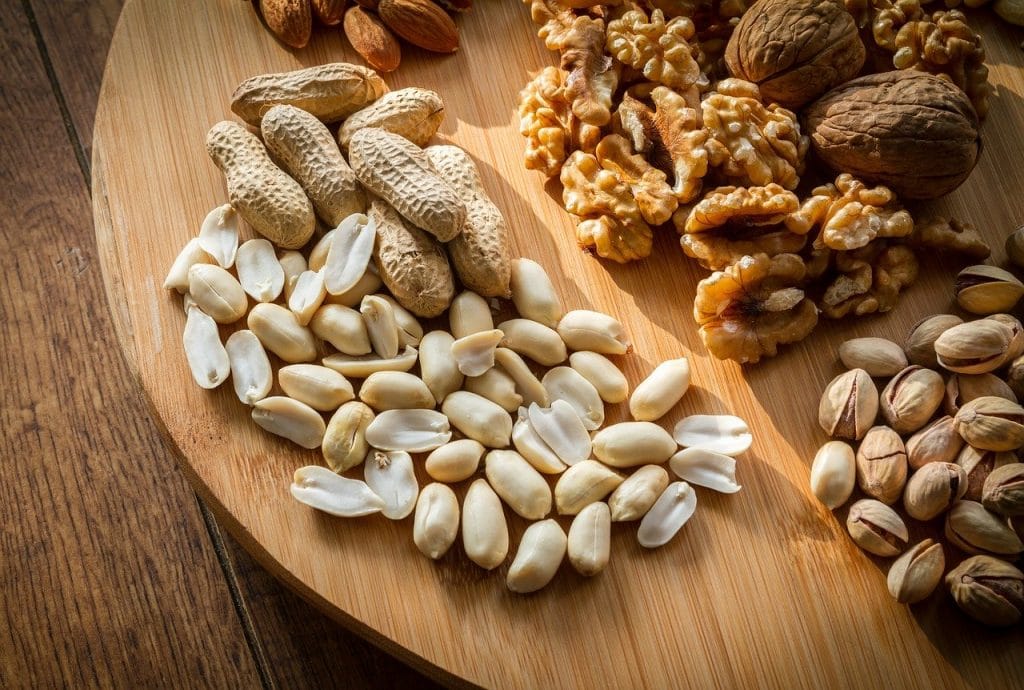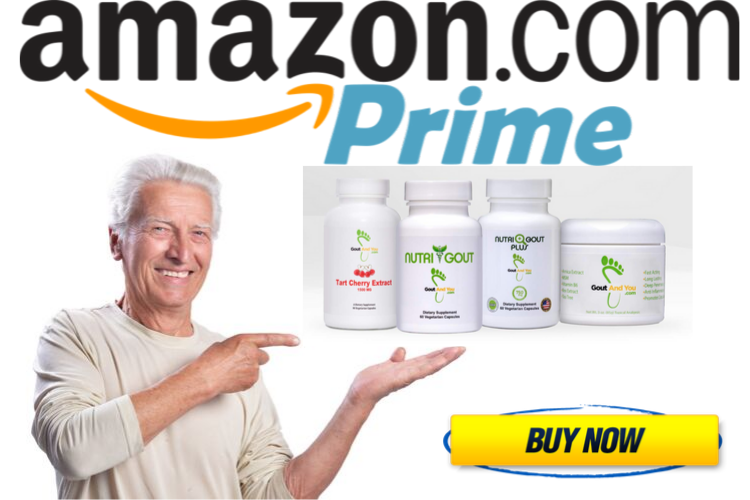
Nuts and gout: Here we’re going to look at the impressive health benefits of nuts, why they should be added into your gout diet, and how to do it safely.
Nuts and Gout
According to World Atlas the top 10 most consumed nuts are:
- peanut
- almond
- walnut
- cashew
- pistachio
- hazelnut
- pecan
- macadamia
- Brazil nut
- pine nut
The peanut — technically a legume — outranks the others by some distance with around 42,596,000 tonnes being consumed annually (2018), China being the largest producer as well as the largest consumer.
Second-placed almond is way behind at 1,188,687 tonnes (2018), but still extremely popular. The USA is the largest producer and consumer of almonds.
Health Benefits of Nuts
Different types of nuts have varying nutritional profiles but, generally speaking, they all provide good amounts of high quality vegetable protein, are high in fiber, high in healthy unsaturated fats, low in unhealthy saturated fats, and a good source of vitamins, minerals and trace elements like selenium.
Nuts also contain antioxidants, such as polyphenols, that help neutralize free radicals that can damage your body’s cells causing diseases like heart disease, cancer, and more.
It’s no wonder then that studies have shown that consuming nuts as part of a well-balanced healthy diet may help to:
- lower cholesterol
- protect against diabetes
- promote heart health
- reduce your risk of heart disease
But, since your diet is an important aspect of proper gout management, can you eat them if you have gout? Are they safe in your gout diet?
Gout and Your Diet
Gout is caused by abnormally high uric acid levels in the blood which, over time, can lead to the precipitation of crystals of monosodium urate in the joints and surrounding tissue. The body’s natural inflammatory response to these crystals gives rise to the painful symptoms we know as a gout attack.
Uric acid is a byproduct of purine metabolism, which purines exist in our body’s cells and in the cells of the food we eat. So as food is digested their purines breakdown and produce uric acid which circulates in the bloodstream.
Studies have linked high-purine foods with increased uric acid and a higher risk of gout. Luckily, different foods can be categorized as being high, moderately high, and low in purines.
People with gout are usually advised to move to a low-purine diet which entails avoiding high-purine foods, limiting moderately-high purine foods, and eating low-purine foods as normal.
So anybody with gout needs to determine a food’s purine content before adding it into their diet.
But studies have also associated sugar — especially fructose and high fructose corn syrup (HFCS) — with increased uric acid and a higher gout risk. So we need to consider a food’s sugar content too.
Purine Content of Nuts
Nuts are considered to be a low-purine food. That is to say a 3.5 oz (100 g) serving produces less than 100 mg of uric acid when digested.
Sugar Content of Nuts
100 g of nuts contain between 2 g and 6 g of natural sugars, mainly in the form of sucrose. Brazil nuts have the least amount of natural sugar, whilst chestnuts have the most.
All-in-all, nuts are considered to be relatively low in sugar.
Alkalinity/Acidity of Nuts
It’s known that a more alkaline urine environment helps to excrete more uric acid than an acidic environment. More uric acid excretion means less uric acid being reabsorbed back into the bloodstream. It also helps to lower the risk of uric acid kidney stones.
So someone with gout should try to maintain a more alkaline urine environment. This can be achieved by consuming more alkaline-forming foods and less acid-forming foods as part of a healthy, well-balanced gout diet.
Almonds are alkaline-forming when digested, but the majority of nuts are acid-forming: peanuts, cashews, walnuts, hazelnuts, Brazil nuts, pecans, macadamias, and pistachios.
Having said that, whether your urine is alkaline or acidic is largely determined by the net effect of your overall diet and not by any one particular food — unless that food is taken to excess.
For example, a balanced diet consisting of 70% alkaline-forming foods and 30% acid-forming foods should move your urine to a more alkaline state and yet still allow you to enjoy the benefits of healthy acid-forming foods such as nuts.
Are Nuts Safe to Eat with Gout?
Being low in purines and sugar, nuts are safe to eat as part of a gout diet (which has most of its protein coming from non-animal sources*).
And, as long as your overall diet has more alkaline-forming foods in it than acid-forming foods, then the majority of nuts being acid-forming shouldn’t be a problem either.
Don’t overdo it though. Just because a food is deemed healthy doesn’t mean you can eat it as though it’s going out of style, especially if you have gout!
Nuts are generally high in calories, so overindulging may add hundreds of calories a day to your diet, potentially leading to weight gain and increased cholesterol. And, remember, being overweight is a major risk factor for gout.
So, to get all the health benefits of nuts, without the risks, it’s best to eat them raw and in moderation: e.g. 1/3 of a cup a day, unsalted.
But what about everybody’s favorite, peanut butter? Is peanut butter safe in your gout diet? I’ve written about that very thing here: Peanut Butter and Gout.
*Note: High-purine foods — mostly found in meats and seafood — have to be avoided in a gout diet. But high-purine foods are generally high in protein too. So the protein deficit has to be filled from non-animal sources such as eggs, dairy, vegetables, herbs, beans, seeds, and nuts. Peanuts, almonds, and pistachios have the most protein in the nut family. Chestnuts have the least.
Who Should Not Eat Nuts
Nuts can trigger a potentially life-threatening allergic reaction (anaphylaxis) among a very small group in the general population. And this can happen with very minute particles.
So if you have a nut allergy, or suspect you have a nut allergy (consult your doctor or healthcare professional to confirm), you should scrupulously avoid nuts and food items that contain even the minutest trace of nuts.



